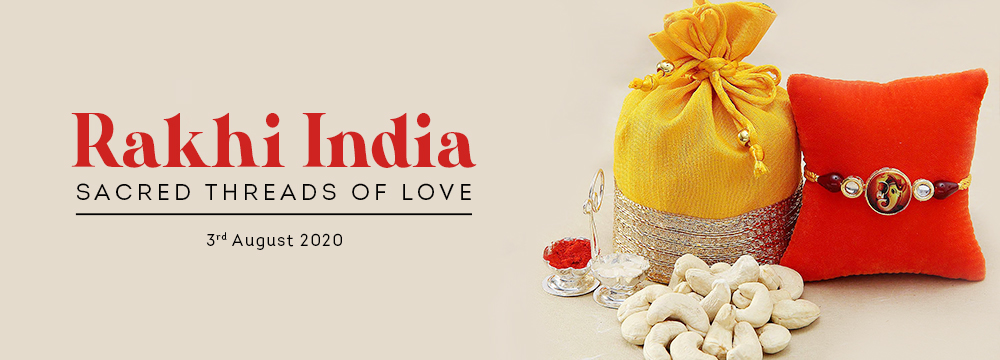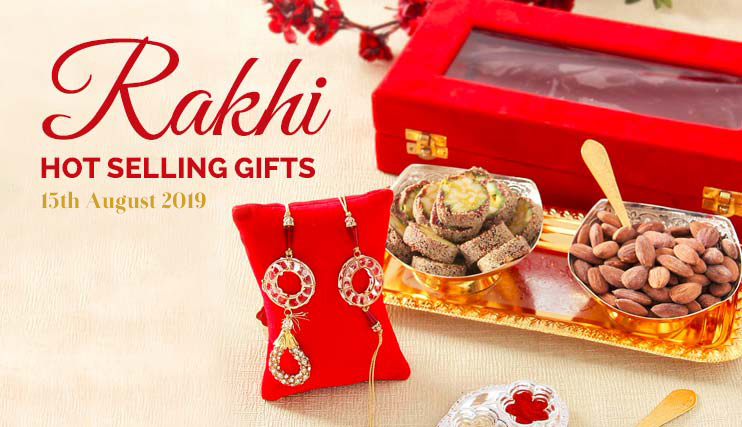Rakhi in Past
Rakhi Festival in India is being celebrated since Vedic times. The tradition is being joyfully continued even in present era albeit in style and trend. The present generation who identify more with gold Rakhis studded with diamonds and precious stones might find it hard to believe that early Rakhi Thread was actually a simple thread called Kalawa.Rakhi in Early Times
According to legends, the first Rakhi that Lord Indra's wife Indrani tied on Indra's wrist is said to have been a sacred thread powered by mantras. The power of this sacred Rakhi is said to have helped Indra to win battle against the demons.
To control the blood flowing from Lord Krishna's hands Draupadi tore a strip of silk from her sari and tied around Krishna's wrist. Krishna was so moved by the affectionate gesture that he promised to protect Draupadi against all hardships in future.
From these and several other examples we know that Rakhi in early times served as a symbolic gesture of a sister's love for her brother. At that time what was most significant was the feelings attached with the Rakhi, the nature and design of Rakhi was immaterial.
What Lead To The Designing of Rakhi?
Popularity of Rakhi Festival grew with the year and so did the development in every sphere of life. Modernity reflected in everything, including the simple thread of Rakhi. Initially there was no concept of buying a Rakhi as there were only homemade Rakhis. Sisters lovingly decorated their Rakhi to depict not just their creativity but also love for their brother. They started embellishing their Rakhi using colorful threads and putting decorative on top. Sisters used to vie each other for the most beautiful Rakhi. This healthy competitive spirit lead to making more creative and artistic Rakhi. Finally paving way to the commercialization of Rakhi Thread.
Rakhi In 1980s and Before
Commercialization of Rakhi infused creativity in them. Sisters now had more readily available options of Rakhis for their brother and they made the most of it. To break the monotony of simple Rakhi Thread of yore, Rakhi now was turned more flashy and gaudy. It was made with sponge or cotton balls and further decorated with foil and artificial flower. In 1980s and before bigger was considered most beautiful in Rakhis. Gradual development in other spheres of life further helped in the development of Rakhis as Rakhi designers got more and better decorative for their Rakhi. Now Rakhis were being made using zari and resham. These looked ethnic and pretty and instantly grabbed the attention of the siblings. With the passage of time Rakhi makers started experimenting with precious metal and turned Rakhi in gold and silver. A more creative and artistic version of these Rakhi is available in present times.
Rakhi - From Cottage Industry to E-Commerce
In the beginning Rakhi production was done under cottage industry. A group of women used to sit together and used to make handmade Rakhi. These were sold in the markets by setting up stalls in the nook and corners. Gradual growth in demand lead to more organized Rakhi making centres. Businessmen realized the potential of this segment and set up factories. They now started employing craftsmen and designers to ensure the production of better and more aesthetic Rakhis. Later, when e-commerce started gaining ground in India, web professionals set up Rakhi Shops online to help sisters send Rakhi to their brothers at the click of the mouse. E-Rakhi shopping was especially found beneficial for siblings staying in different countries such as US or UK. Today, online Rakhi shopping is thriving and it is projected that will be the future of Rakhi marketing.


